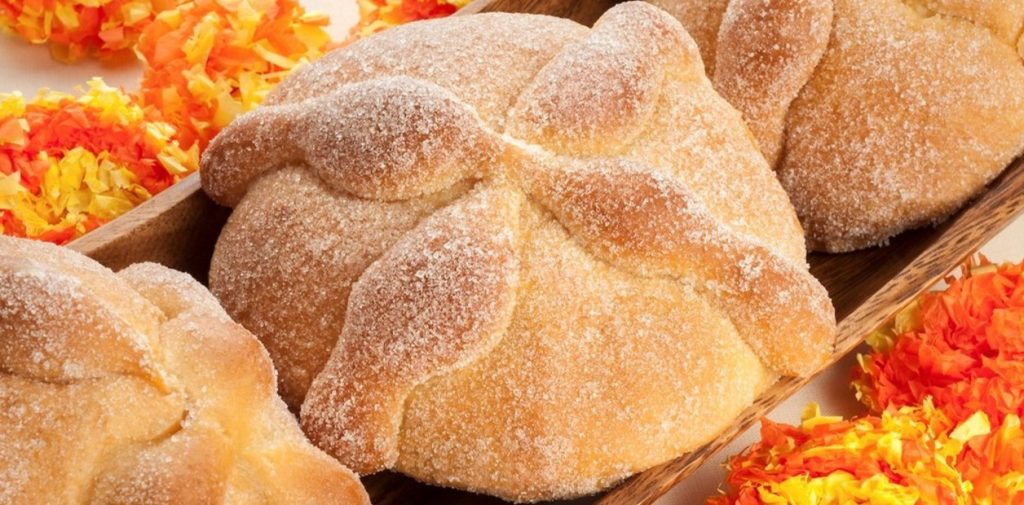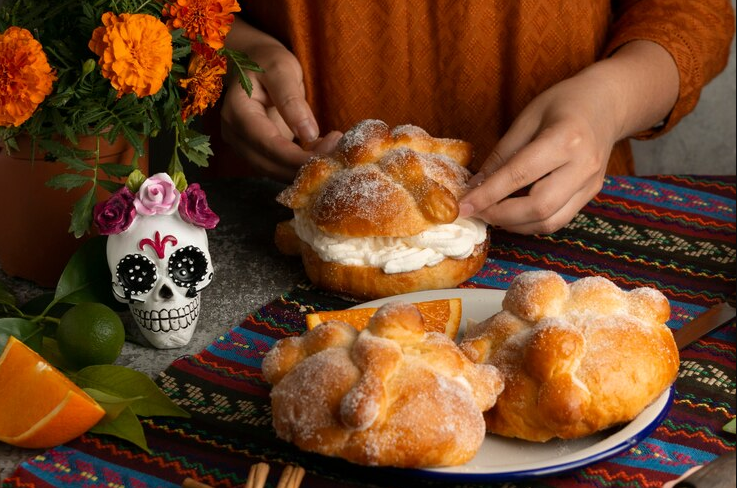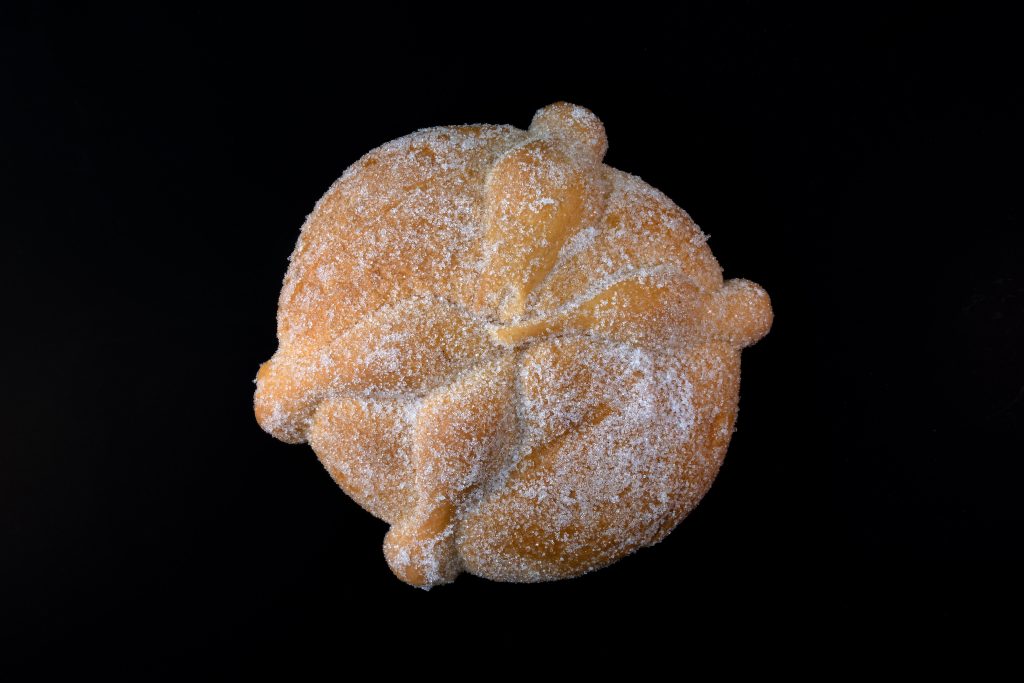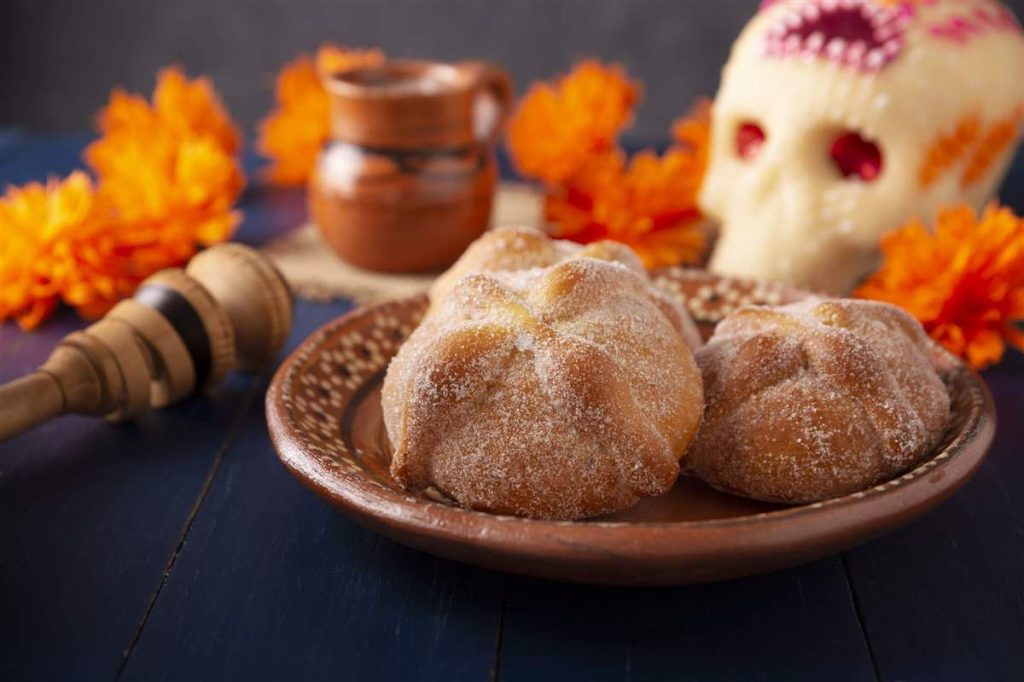The rich history and symbolism of Pan de Muerto
Origins of this iconic day of Pan de Muerto
The rich history and symbolism of Pan de Muerto are deeply rooted in Mexican culture. This traditional Mexican bread holds deep cultural meaning and plays a central role in Day of the Dead (Día de Muertos) celebrations. Its history blends ancient indigenous traditions with Spanish colonial influences, dating back to pre-Hispanic times when people made offerings to honor their ancestors. Bakers intentionally shape the bread into a circle to symbolize the eternal cycle of life and death. Additionally, they add bone-like decorations to represent the connection between the living and the dead. Families flavor Pan de Muerto with orange blossom water and dust it with sugar, thus creating a delicious treat that varies in recipe from household to household. Consequently, this cherished tradition embodies the rich cultural heritage of Mexico and its unique approach to celebrating life and remembering those who have passed.
Furthermore, during the Day of the Dead, Pan de Muerto becomes a key part of ofrendas (altares), placed alongside other items for the departed. Families actively make this special bread to welcome and celebrate the spirits of their loved ones, thereby keeping their connection with their ancestors alive. Every year, as families come together to make and share Pan de Muerto, they continue a meaningful tradition that not only honors the past but also celebrates life.

How to make Pan de Muerto: A traditional recipe
Essential Ingredients for Authentic Pan de Muerto
Flour
All-Purpose Flour: Typically, around 700 grams (approximately 5 cups) of flour is used to create the base of the bread.
Sugar
Granulated Sugar: About 1/2 cup (approximately 100 grams) is added to sweeten the dough.
Yeast
Active Dry Yeast: Usually around 20 grams (or 1¼ packets) is necessary to help the bread rise.
Milk
Evaporated Milk: Approximately 12 ounces (or 1 ½ cups) is often used to enrich the dough.
Eggs
Large Eggs: Typically, 3 eggs are included in the recipe to add richness and moisture.
Butter or margarine
Unsalted Butter or Margarine: About 115 grams (or 1/2 cup) is used for flavor and texture.
Salt
Salt: A pinch is added to enhance the flavor of the bread.
Anise seeds
Anise Seeds: Often included for their distinct flavor, which is characteristic of Pan de Muerto.
Water
Warm Water: Around 60 ml (1/4 cup) is used to activate the yeast.
Toppings
Egg Wash: A mixture of egg yolk and water is used to brush the bread before baking for a golden finish.
Sugar or Sesame Seeds: Sprinkled on top for added sweetness and decoration.

To summarize, the essential ingredients for making authentic Pan de Muerto include all-purpose flour, sugar, active dry yeast, evaporated milk, eggs, butter or margarine, salt, anise seeds, warm water, and optional toppings like an egg wash and sugar or sesame seeds. These ingredients come together to create a slightly sweet, enriched bread that is traditionally shaped and decorated to celebrate the Day of the Dead, making it a beloved part of Mexican culture and cuisine.
Step by step guide to baking Pan de Muerto at home
If you’d like to see how Pan de Muerto is made, check out the following video. This video provides a step-by-step guide on preparing this traditional bread, showcasing the techniques and ingredients used in its creation.

Pan de Muerto in Mexican culture
The role of Pan de Muerto in day of the dead celebrations
Mexicans bake Pan de Muerto, which translates to “bread of the dead,” to celebrate the Day of the Dead (Día de Muertos) on November 1st and 2nd. During this holiday, families come together to remember and honor their departed loved ones. Consequently, Pan de Muerto plays a crucial role in these celebrations, serving both as a delicious treat and a meaningful symbol.
The shape of Pan de Muerto holds great significance. Bakers typically form it into a round shape, symbolizing the eternal cycle of life and death. Moreover, they often place a small ball of dough on top of the bread, representing the skull of the deceased. Additionally, bakers arrange cross-shaped pieces of dough around the bread to symbolize bones. This intricate design is far from random; rather, it conveys profound meaning about the interconnectedness of life, death, and the enduring bond between the living and the dead.
If you want to know more about Popular Mexican Pastries, click here.

Incorporating Pan de Muerto into your altar de muertos
During the Day of the Dead, families actively create altars called “ofrendas” to honor their deceased relatives. They lovingly decorate these altars with photos, candles, flowers, and favorite foods of the departed, including Pan de Muerto. Moreover, families carefully place the bread on the altar as an offering, believing it nourishes the spirits of the dead during their visit to the living. Consequently, this practice allows families to celebrate the lives of their loved ones and keep their memories alive.
Furthermore, making Pan de Muerto often becomes a cherished family activity. Many families proudly maintain their own recipes and traditions for baking this special bread. As a result, it is common for family members to gather together in the kitchen, sharing stories and memories of those who have passed. This process not only brings families closer but also helps to pass down traditions from one generation to the next.
Enjoying Pan de Muerto
In conclusion, while Pan de Muerto serves as a symbolic offering, people also eagerly enjoy it as a sweet treat. Many love to savor it with hot chocolate or coffee, especially during the celebrations. Additionally, bakeries, known as “panaderías,” busily bake large quantities of Pan de Muerto during this time, and many people excitedly anticipate buying it. To add variety, some bakeries even offer unique flavors and fillings, thus making it a fun experience to try different versions.
